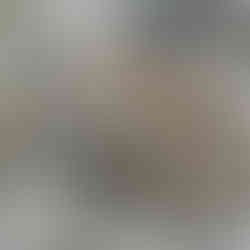Take a Walk on the Wild Side
- Rafael Bloch
- Apr 23, 2024
- 3 min read
Updated: May 1, 2024
When Lou Reed sang Take a Walk on the Wild Side it really had nothing to do with what you’re about to read. But it seemed like the most appropriate title for this blog post. I’ll also admit that it has been a little quiet on the blogging front as I’ve been diving into a trails course with lots of walking. With some added walking and a little extra walking too. Maybe with an animal encounter sprinkled here and there.
In my first blog post I wrote “when you are on foot, you are equals in the land you share with the elephants and buffalo you encounter” and that sentiment hasn’t changed. But after almost 3 weeks of walking in the wild Okavango Delta, I have a gained a few more insights.
There are signs in the landscape that you simply cannot experience in a vehicle. To be on foot with all your senses activated, you tune into the finer details of the landscape.
I experienced this epiphanic moment on a particularly strenuous walk which changed my perspective on how I view being in nature. Huffing and puffing after what felt like an unnecessarily long stretch of walking on soft sand, we stopped to finally have a breather. A bead of sweat slid down my temple as I stared at the floor regaining my breath. But after a few moments, what was revealed, was that this seemingly bare and barren soil, turned into this thriving miniature landscape teeming with life.
Ants, centipedes, spiders, grasshoppers, termites and butterflies all began to show themselves again, one by one. You follow the trail of the one ant as it gets snatched up and eaten by a much bigger one. A wasp flies passed carrying a bright green caterpillar in its arms. Mushrooms are growing out of elephant dung, this collection of little fungi blueish and delicate, wobbling in the breeze. There's a flash of brilliant pink from a vlei ink flower, its colour juxtaposed on this parched land. And what looks like small craters on the ground turn out to be ant highways straight to the nest. That is all before you recognise the grass spider and praying mantis nests dotted all around you in the wild sage and long grass.
And if you zoom out for a second, you realise that there are these parallel scratch marks in a linear organisation on the ground from a wildebeest scent marking.
The grass on animal pathways is also flattened in such a way that it shows that “this” path goes towards the waterhole and “that” path goes away from it.
You kneel down along an elephant track and you see the drag marks from its trunk between its giant footprints. There’s this small muddy ball from a dribble of a bull elephant’s urine gathering dust. You pick it up and smell it, roll it in the palm of your hand. Squish it. It’s kind of gross, but it’s this peppery, bizarre smell that you want to keep smelling because how many people in the world actually get to do that?
You learn to trust the shrill of cicadas and call of oxpeckers and you listen to the particularly different squawks of birds and squirrels alerting you that there’s either a snake or something bigger lurking around.

Then you feel the wind changes direction and so do you because you don’t need the buffalo “just over there” to pick up your scent.
The golden sun is setting and the stiff, dry grass you've been chewing on has become too soggy for it to look cool.

And we’ve lost track of time again because there really is nowhere else to be but here, sitting on a termite mound as elephants walk past.
What a privilege it is to be able to intimately experience a landscape so wild on foot.
I’m not going to end with a “you’ve got to join us” because a Trails Course is not for everyone. But for those of you who sit with this sombre feeling after reading this… well…
Related Courses:







The photo of the elephant footprint with the blogger's hand print superimposed reminds me that one can estimate the height of an elelphant by measuring the circumference of the footprint and multiplying by a particular factor. So, how high was this giant? Do you think he would have looked on favourably as you played with his urine? 🤔